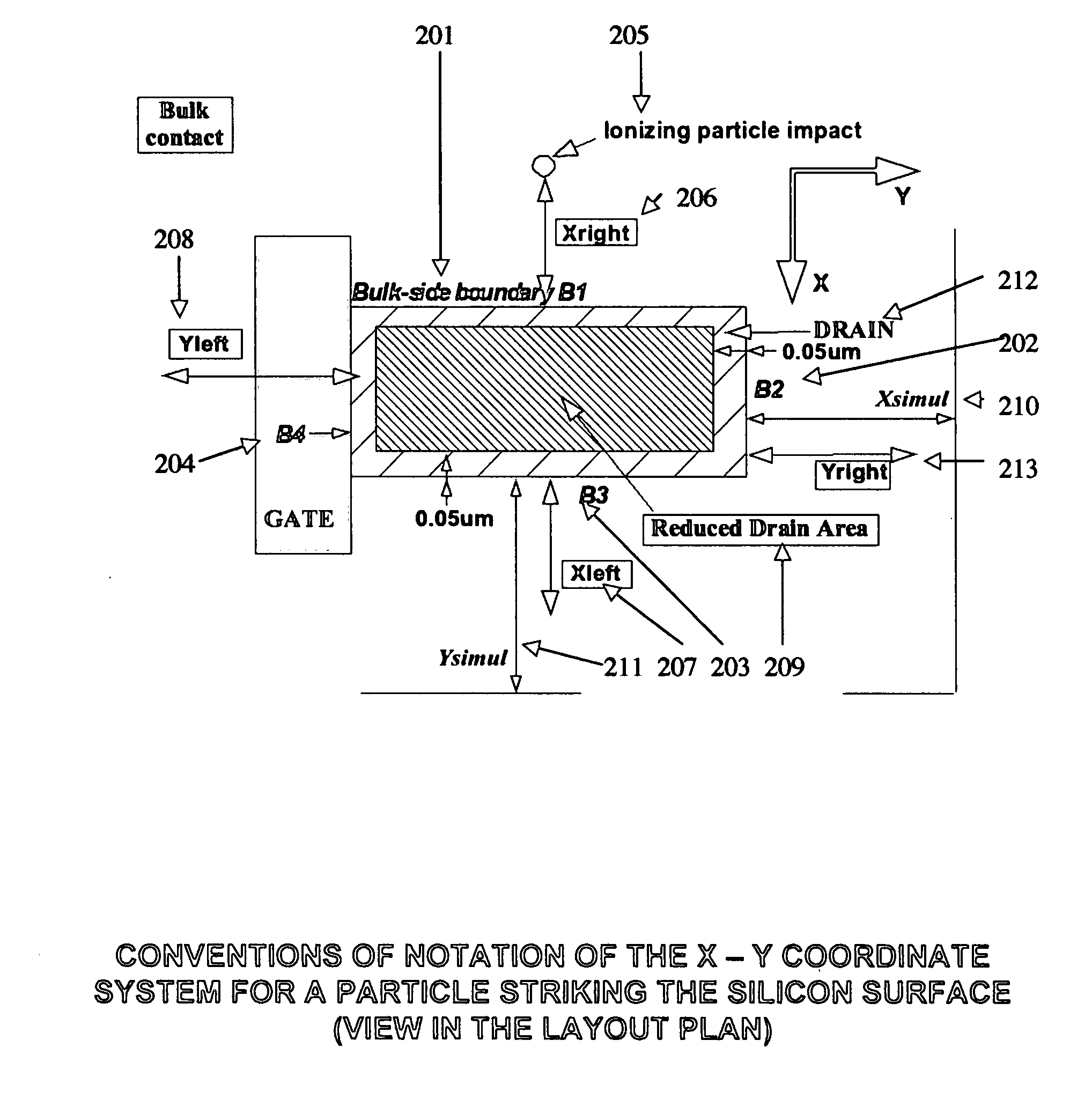Apparatus and method for the determination of SEU and SET disruptions in a circuit caused by ionizing particle strikes
a technology of ionizing particle and set disruption, applied in the field of apparatus and method for the determination of seu and set disruption in a circuit caused by ionizing particle strike, can solve the problems of not being able to take into account the details, the accuracy of analytical and numeric models available in the literature, and the increase of the possibility that such an event creates a major problem, etc., to achieve the effect of accurate and fast simulation method and faster speed
- Summary
- Abstract
- Description
- Claims
- Application Information
AI Technical Summary
Benefits of technology
Problems solved by technology
Method used
Image
Examples
case 1
[0220]Finally, a modification to the target test cell or circuit can be performed (1522), wherein the modified target test cell or circuit is expected to be immune from malfunctions due to SEU or SET, the user being advised to rerun TFIT to make sure this goal has been achieved. Alternatively, the user can use the TFIT tool to run various cases such as for example:[0221] The user may select one particle, one impact point and one trajectory and obtain the SEU or SET responses for various W values for every struck transistor of the target cell. Or[0222]Case 2: The user may select say n heavy ions, impact points and trajectories and obtain the responses for different W values for each trajectory, and impact point, for each different ion.
In the exemplary embodiments explored by applicants the current source insertion method used various exemplary methods. In the case of inverter and in many cases simulated, the bulk node and the source node of the struck transistor were wired together a...
PUM
 Login to View More
Login to View More Abstract
Description
Claims
Application Information
 Login to View More
Login to View More - R&D
- Intellectual Property
- Life Sciences
- Materials
- Tech Scout
- Unparalleled Data Quality
- Higher Quality Content
- 60% Fewer Hallucinations
Browse by: Latest US Patents, China's latest patents, Technical Efficacy Thesaurus, Application Domain, Technology Topic, Popular Technical Reports.
© 2025 PatSnap. All rights reserved.Legal|Privacy policy|Modern Slavery Act Transparency Statement|Sitemap|About US| Contact US: help@patsnap.com



